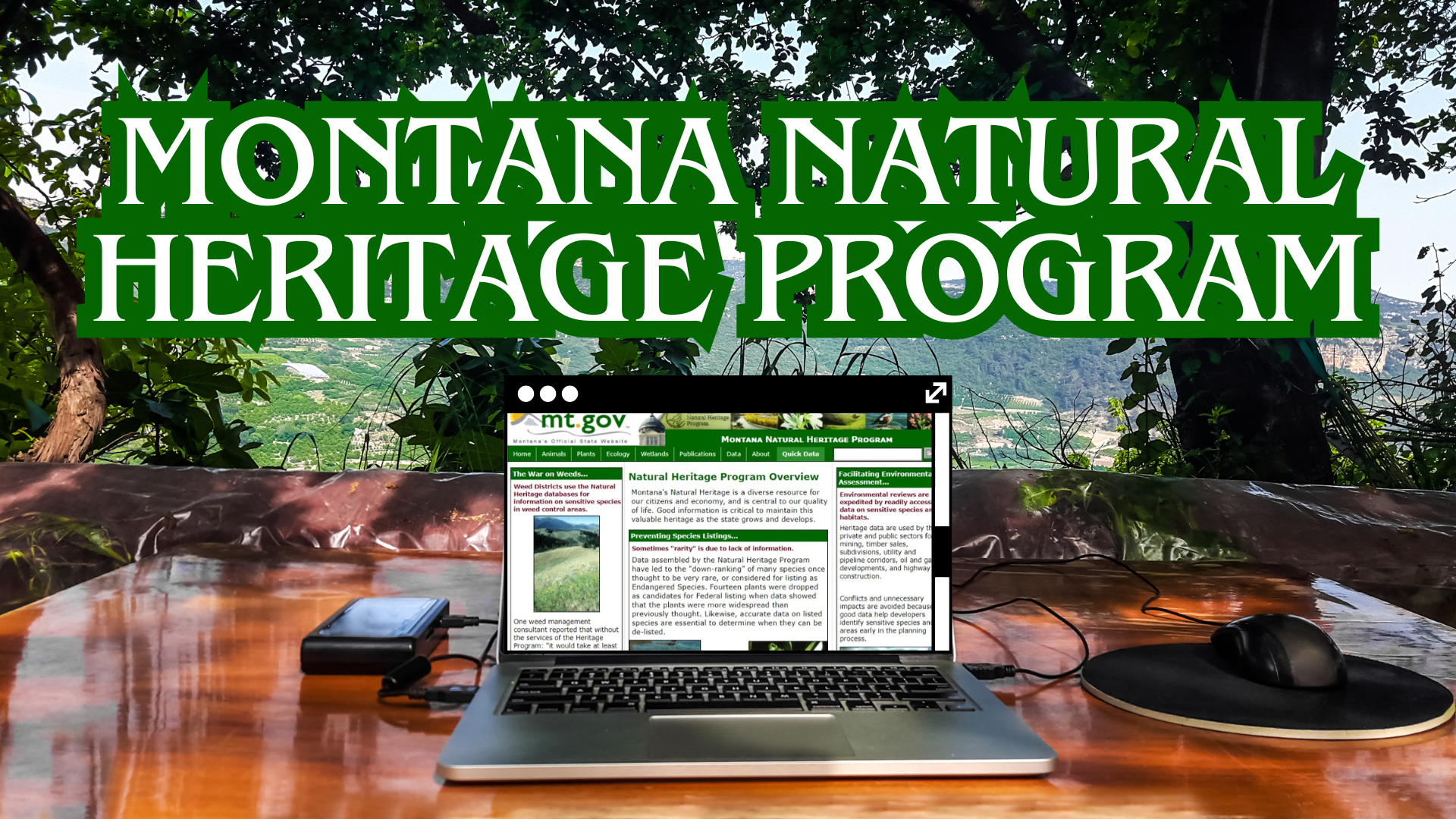Click here to visit the Montana Natural Heritage website.
The Montana Natural Heritage Program is a resource for scientists, private citizens and government to improve our state’s quality of life. Creating ways for the community to help provide quality reporting and create free access to information is vital to maintaining our natural heritage. This program is involved in the war on weeds, identifying endangered species, and providing environmental assessments.
Weed districts use these databases to identify and control invasive species. Invasive weeds can quickly spread and outcompete native plant varieties. They deplete natural resources like sunlight, water, and nutrients. This can lead to decline in biodiversity, habitat loss for animals, increased fire risk, and economic losses in agriculture by depleted crop yields. This program reduces these risks, makes weed control projects more efficient, and identifies new risks.
The program also creates accurate listing and identifying of endangered species. Fourteen plants were removed from the Federal listing when data showed they were more prevalent than previously reported. Correct reporting of endangered species is crucial for conservation efforts to focus on vulnerable plants and animals at risk of extinction.
Providing free environmental assessments expedites data on sensitive species and habitats. This is available to private and public parties for mining, timber sales, subdivisions, utility and pipeline corridors, oil and gas developments, and highway construction. This reduces conflict and environmental impacts in the first stages of planning.
You can help the Montana Natural Heritage Program by using the iNaturalist app. Users can provide data of plants and animals in their local area. Click here to get started.
The Montana Natural Heritage Program is pivotal in protecting our natural resources. The program’s databases are used to prevent invasive weeds destroying environments and agriculture. It provides accurate listing of endangered species. Their environmental reviews and data are available to everyone to help protect and maintain our natural heritage for years to come.




